Updated: Article “The Vanderbilt Renaults” by Marvin McFalls
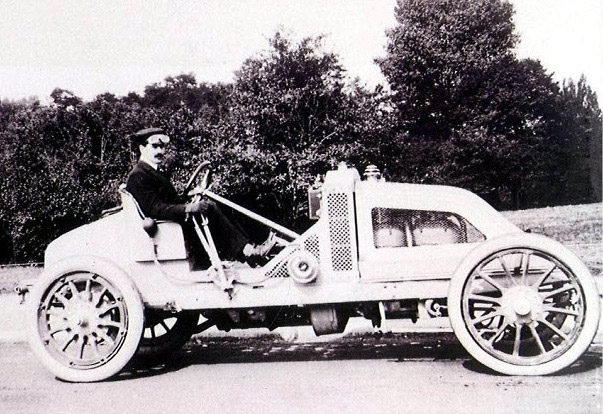
As a follow-up to the reunion of four Renault Vanderbilt Racers at the 2017 Pebble Beach Concours d'Elegance, Marvin McFalls, president of the Renault Owners Club of North America, has provided this definitive article on these amazing racers linked to Willie K.
Enjoy,
Howard Kroplick
The Vanderbilt Renaults
By Marvin McFalls
Here in the United States, when the name Renault is mentioned, most people think of the French auto manufacturer’s Post-war models. However, Renault’s history goes back to the earliest days of American motoring, and particularly the pioneering days of racing. The story of the Vanderbilt Renaults is one of the most intriguing of this early automotive period. Until now it is a story that has received little attention, however following the recent 110th Anniversary Reunion held at this year’s Pebble Beach Concours, the Vanderbilt Renault is finally gaining the notoriety it rightly has earned.
Willie K.
With any discussion of the Vanderbilt Renaults we must first mention the man for which they are named, Mr. William K Vanderbilt Jr. Known as “Willie K.” to his friends, he was America’s first racing champion, winning many races held in the U.S. in 1900 and 1901. For the 1902 season, Willie moved onto the world racing stage competing in the city to city race from Paris to Vienna. While his car broke down half way to Vienna, he was able to secure a third place finish in the Circuit des Ardennes race later that summer as well as set the land speed record for the standing kilometer, reaching 111km/h (69mph) in his 60 hp Mors. In 1903, Vanderbilt entered the Paris to Madrid race, but failed to finish again due to mechanical issues. The following year, Vanderbilt decided to host his own race, the Vanderbilt Cup. The event was held on his family’s land in Long Island, New York, and in the years that followed would become the most prestigious race in America, if not the world.
Reanult Racers
Secondly, we must mention the lineage of the Renault racer. In the 1902 and 1903 City to City events in which Willie K had competed, the winners of the both racers were Renaults. In 1902, Marcel Renault had won the Paris to Vienna, and in 1903 company founder, Louis Renault was the winner of the Paris to Madrid race. While Vanderbilt fancied these smaller Renaults, Renault’s next creation, the Type AK, powered by a large 13-liter, four-cylinder engine with a shaft drive transmission grabbed his attention.
Renault had created their new racer for The First Grand Prix (Big Prize), which was held on a 60-mile course near LeMans, France. The winner of the race was Ferenc Szisz, who had skillfully powered Renault’s latest creation past tremendous competition.
The Vanderbilt Racers
Vanderbilt was so impressed with the performance of this amazing new Renault racecar that he requested Renault to build a smaller 2/3 scale version for himself and his friends.
To meet the new standard for a stock car class, at least 10 examples had to be created. At a cost of $8,500 each, even though the cost was prohibitive, sales rolled in. Vanderbilt Renault owners were the Who’s Who of New York Society, including: H.P. Whitney, Willis MacCormick, Robert Guggenheim, W.E. Dodge, L.S. Thompson, Payne Whitney, E.R. Thomas, Roy Rainey, R.J. Collier, and F.W. Savin. It is believed that a total of either 10 or 11 of the Renault Vanderbilt Racers were produced, though Renault had set aside a total of 16 serial numbers for the series.
The Vanderbilt Renault was built on the smaller Type AI chassis. First introduced in December 1905 at the Paris Motor Show, it was the flagship of the Renault Line. When the first Vanderbilt Cup Renault was introduced in July of 1907 it was classified as a Type AI, Series C, using the same 7.4 litre engine what had a bore of 130mm (5.1 inches) and a stroke of 140mm (5.5 inches), with shaft driven four-speed transmission. It had a shortened wheel base of 112- ½ inches (comparable to a 1932 Ford). The Vanderbilt Renault was rated at 35/45hp. To better understand this rating, the first number refers to the French taxable horsepower rating, meaning the owner would have to pay a tax related to that 35hp rating. The second number 45hp refers to the engine’s actual horsepower output. Being that it is French, the scale was in Brake Horsepower which is slightly more conservative than S.A.E. Horsepower, which converts to nearly 50 horsepower.
By 1907 when Willie K and all his friends took delivery of their new stock production racers, there was only one problem, the Long Island Motor Parkway was under construction and there would be no Vanderbilt Cup race that year. Still, the Vanderbilt Renaults would go on to have an impressive race history winning 24-hour races in the New York area in 1907, and again in 1909 against much larger and more powerful vehicles. In the 1908 season, a Vanderbilt Renault won and set a world record at the 12-hour Brighton Beach race, as well as a 2nd place finish in the Motor Parkway Sweepstakes a few weeks after the Vanderbilt Cup.
The oldest mystery surrounding these cars is if there were either 10 or 11 examples built. This comes from the fact that the Renault Dealer in New York, Paul Lacroix, had handled the importation and delivery of the Vanderbilt Renaults. Lacroix, In fact, was the co-driver of the 1907 Morris Park Winning Vanderbilt Renault along with driver M.G. Bernin. Since Lacroix was representing the Renault Freres Selling Branch and not one of the ten owners mentioned previously, it has never been confirmed if there was actually an eleventh car owned by the New York Branch or if they were campaigning one of their customers’ cars.
The idea of a Branch owned car is further complicated by Louis Renault’s stance against racing, following his brother Marcel’s death in the 1903 Paris to Madrid race. Louis claimed that racing added nothing to the improvement of the automobile. Furthermore, he declared that the financial and other costs of racing far exceeded revenues from whatever sales resulted from the success. None the less, when the Initial Grand Prix was announced, and the restriction allowing only three cars per country was rescinded, Louis decided to compete for national pride even though 23 of 32 entrants were French. This was the only time Renault competed with a factory effort from 1904 to 1924.
So, if the Vanderbilt Renault was dealer owned, it would have been in violation of Louis’ ban. That being said, his brother Fernand Renault was in charge of the New York Branch and the great distance from Billancourt might have been enough to allow them to compete without Louis’ knowledge prior to the race, or possibly at this time Louis didn’t have control of over his brother’s activities in the U.S. Regardless, after the Morris Park victory, the Renault Fréres Selling Branch boldly advertised about their victory, that their record breaking Renault was the only vehicle in the race that didn’t have to stop for repairs, as well as mentioning Vanderbilt and the other prominent owners of these automobiles. So for sure this was a contradiction in Louis’ stance on the value of racing.
Following Louis Raffolovitch’s win of the 1909 Brighton Beach New York 24-hour race, He sent word to his childhood friend Louis Renault about his victory, only to get the reply “We are not amused.” With Fernand Renault’s death that same year and Louis buying out his interest in the company, that certainly ended any loopholes in the company wide ban on racing.
The Five Extant Vanderbilt Renaults
“The Little Renault” as Willie K called his car had proven to be the giant beater that Vanderbilt had hoped it would be when he had it commissioned by Renault. With such a pedigree you would think these vehicles would have been coveted and found their way into museums and private collections. At this time in the very brief history of the automobile, the best one could hope was once a racer was no long competitive, it would end up in a barn or would be repurposed for some commercial application. But the majority of earlier racers were just scrapped. That five, or as much as possibly half, of the Vanderbilt Renaults still remain is highly unusual for cars of this era.
Regrettably, as this was still the infancy of motor racing, there were no significant documentation as to which cars competed in what races or, if there was any documentation, it did not survive. The only known instance of one of the 10 original owners competing in a race was at the Ft. George Hill Hillclimb in Manhattan where Robert Guggenheim competed and finished tenth.
Of the Renault Vanderbilt Racers produced, all 5 cars that remain have well documented histories going back to the 1920s and 1930s. The longest continuous ownership belonged to the Gibson family. Kirk Gibson Sr. bought their Renault from its second owner, racer George Rand, in 1928 and it remained in the family until last year when Kirk Gibson Jr. donated it to the Simeone Foundation. After seeing Gibson’s car, good friend and business associate George Waterman Jr, began a search and acquired a Renault of his own a few years later, today that car is the centerpiece of The Price Museum of Speed in Salt Lake City. While one of the Vanderbilt cars remained in New York for decades at the Long Island Automotive Museum, it found a new residence in Maine at The Owls Head Museum. Another Vanderbilt Renault, formerly owned by opera singer James Melton, was once part of the Otis Chandler Collection and the Indianapolis Motor Speedway Museum, is now owned by Robert Kauffman of Charlotte, NC.
However, the car with one of most interesting histories is “Agatha.” This Vanderbilt Renault that somehow made its way back across the Atlantic to England and was acquired in 1935 by Marcus Chambers for the sum of fifteen pounds, at the time its scrap value. Finding that the car still had some life left he used it in a series of hill climbs in 1936, before selling it to the Mills Brothers who continued to campaign it under the name “Scarlett Woman” until the outbreak of the Second World War. After the war, it was bought by a gentleman name Dunn who held on to it for decades until finally selling it to David Harrison, who completely restored it in the 1980s. Today it is owned by Wolfgang Augé a Renault dealer in Germany. Unfortunately Agatha was not able to make the long voyage to Central California for the Reunion.
To date, it hasn’t been able to be determined who the original owners of each vehicle were, or which cars competed in specific races. It has always been a mystery, however following the recent reunion at the Pebble Beach Concours this may not be the case for much longer. We hope in the not too distant future original owners as well race winners might be able to be matched with the remaining cars through forensic photographic examination of original images.
While at first glance these cars all seem to be nearly identical, they are not. The chassis and drivetrains seem to be identical, and the majority of the body panels seem to have been made by the same manufacturer, while the cars greatly differ in the suspension and steering systems. Some of the cars have or had a small storage compartment in the rear, one of car’s dash is built at a significantly different angle than the other cars. Even the wheels and axle caps are different from car to car, just to mention a few examples never before addressed.
Upon further examination, even the hardware used to attach various parts and panels is very different from car to car. Of the four cars that were present, the consensus was that three different coach builders had completed the final assembly. Only the Price Collection car, and the Simeone Foundation car, appeared to have the majority of the same fasteners and hardware as well as rear storage compartment. Both Robert Kauffman’s car and the Owls Head car had very different finishing work from each other and from the Simeone and Price cars.
With so many differences, it should be possible with today’s digital photographic technology to scan original photos and make conclusions about which cars may have belonged to a given individual and particularly which cars competed in specific events with significantly more certainty than previously. Many images are known to exist of Willie K’s Renault and of the cars that were campaigned from 1907 to 1909. To this point, there are very few images of the other original Vanderbilt Cup owners’ cars that have been made public, but attempts are currently being made to gain access to as many of them as possible. The larger the pool of images, the more determinations that can be made. Who knows, maybe there is another Vanderbilt Renault out there yet to be discovered?
While this more than century’s old mystery will probably never be completely unraveled we hope that in the months and years to come more information on these amazing Vanderbilt Renaults will come to light.
Sources:
http://www.vanderbiltcupraces.com
http://www.velocetoday.com/renault-to-race-or-not-to-race/
https://www.hemmings.com/blog/2017/01/05/in-the-same-family-since-1928-a-1907-renault-3545-vanderbilt-racer-joins-the-simeone-museum/
http://autoweek.com/article/car-news/1907-renault-3545-runabout-formula-fun
http://www.vanderbiltcupraces.com/blog/article/antique_automobile_1907_renault_vanderbilt_racer
http://theoldmotor.com/?p=136765
http://www.teamdan.com/archive/gen/indycar/1908.html
https://www.sportscarmarket.com/profile/1907-renault-ai-35-45-vanderbilt-racer
https://www.hemmings.com/magazine/hsx/2016/11/Echoes-of-Le-Mans---1907-Renault-35-45/3750238.html
http://www.motorsportmagazine.com/archive/article/november-1985/55/re-acquaintance-agatha
William K. Vanderbilt Jr.'s Renault Racer.
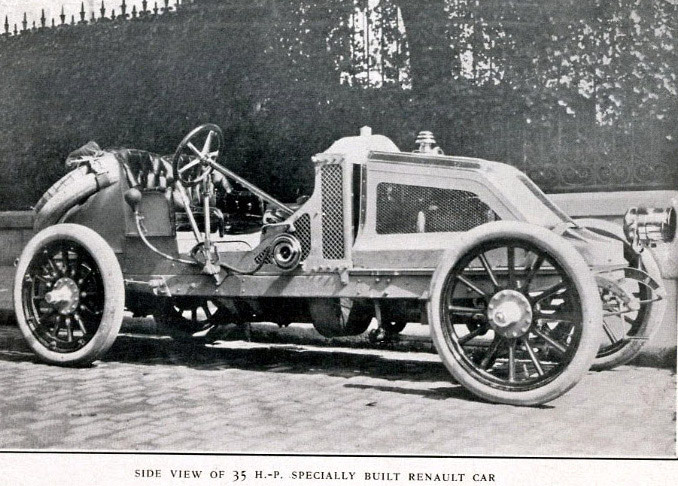
Courtesy of book Log of My Motor and the Suffolk County Vanderbilt Museum
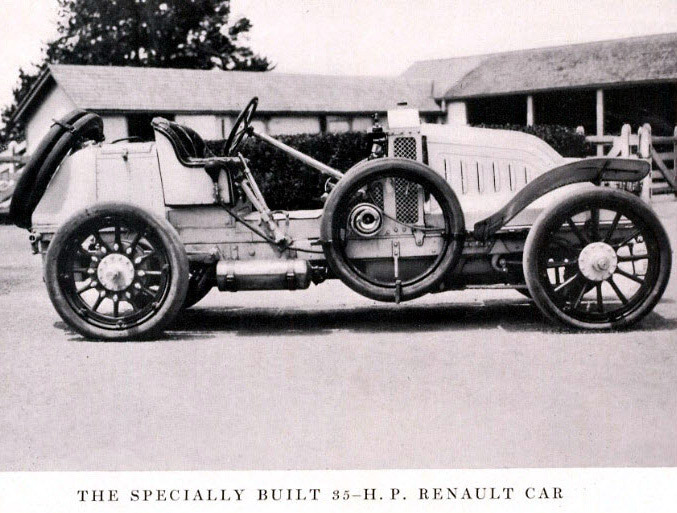
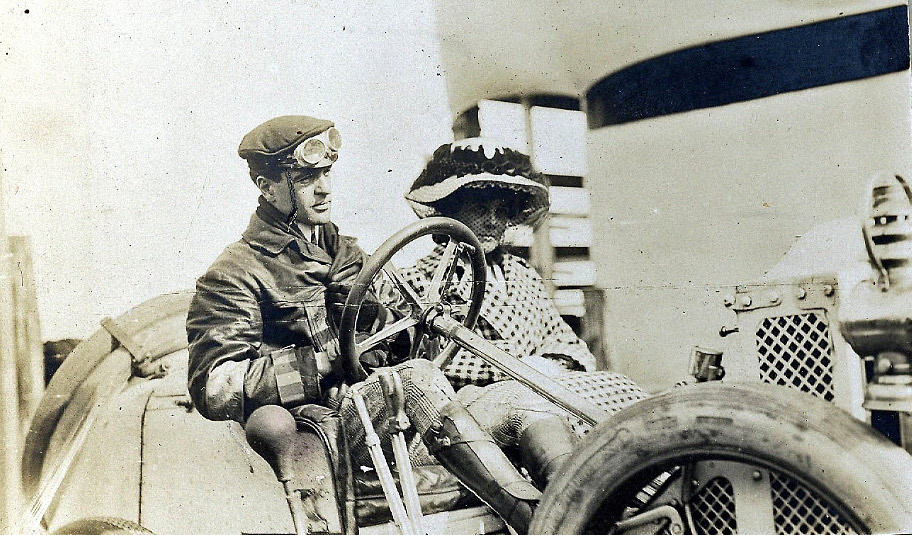
Willie K. and his wife Virginia Fair Vanderbilt at the 1908 Vanderbilt Cup Race.
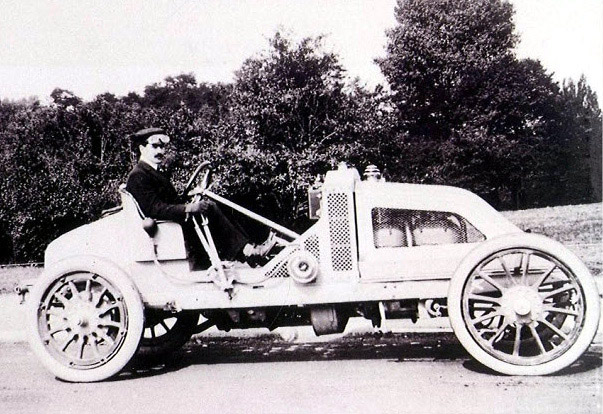
1907 Morris Park 24-Hour Race
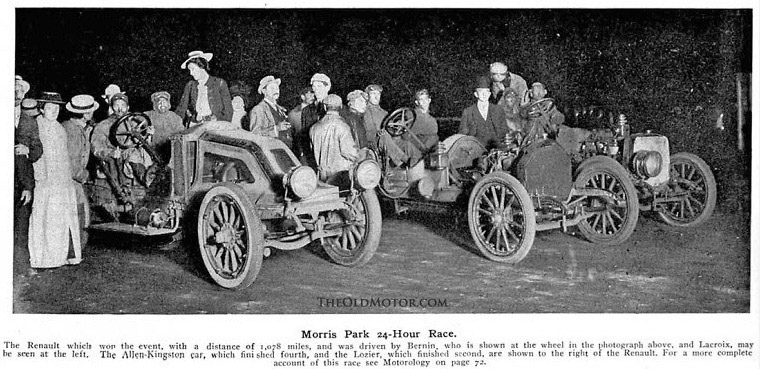
Paul Lacroix and M.G. Bernin at Morris Park 24 hr race from Theoldmotor.com
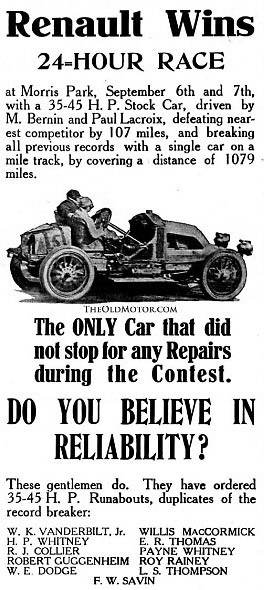
Vanderbilt Renault ad following Morris Park 24 hr race from Theoldmotor.com
1908 Motor Parkway Sweepstakes
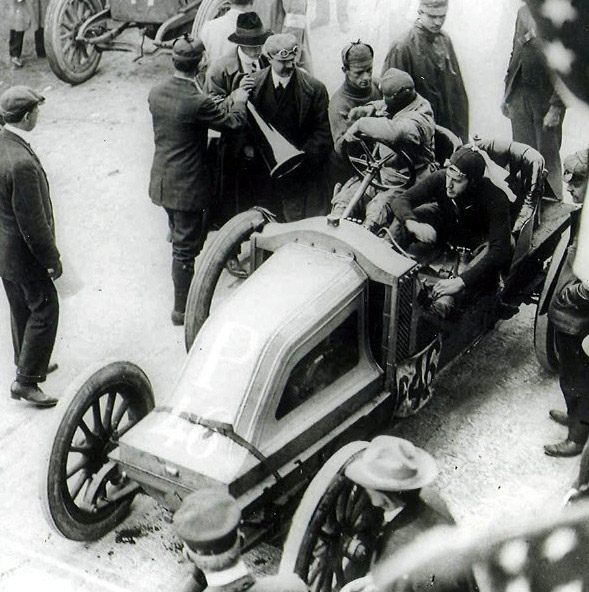
Lewis Strang at the 1908 Motor Parkway Sweepstakes
1909 Brighton Beach 24-Hour Race
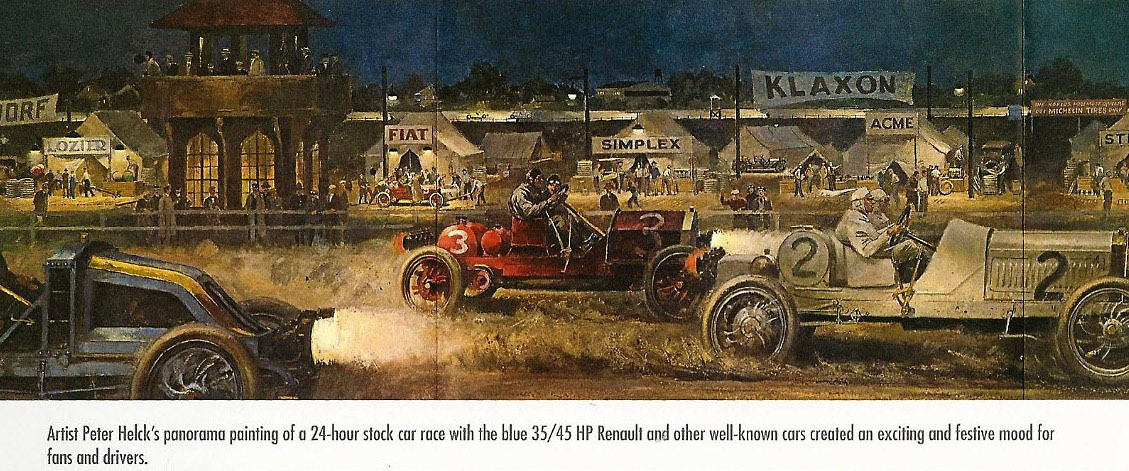
Peter Helck’s Panorama
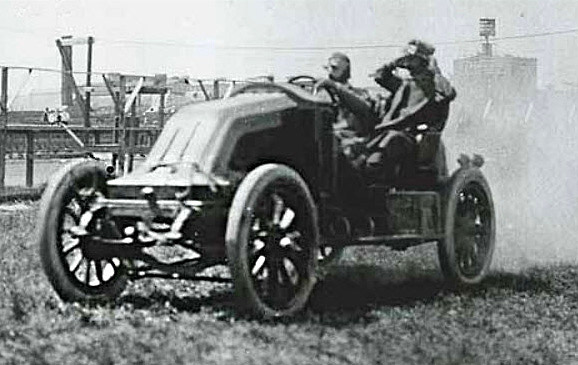
Louis Raffolovitch at Brighton Beach 1909 24 hr race from Veloce.com
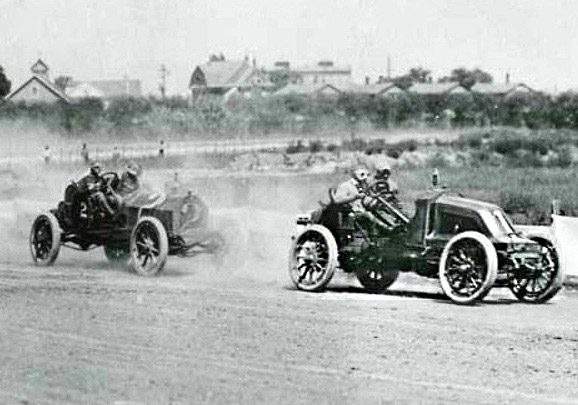
Louis Raffolovitch at Brighton Beach 1909 24 hr race from Veloce.com
Agatha Renault Vanderbilt Racer.
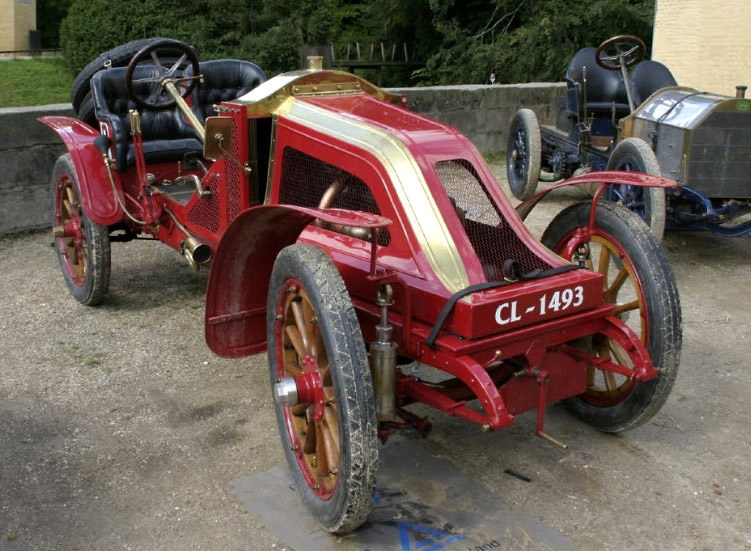
Agatha in the UK in the late 20th century from motorsportmagazine.com
Kirk Gibson's Vanderbilt Racer
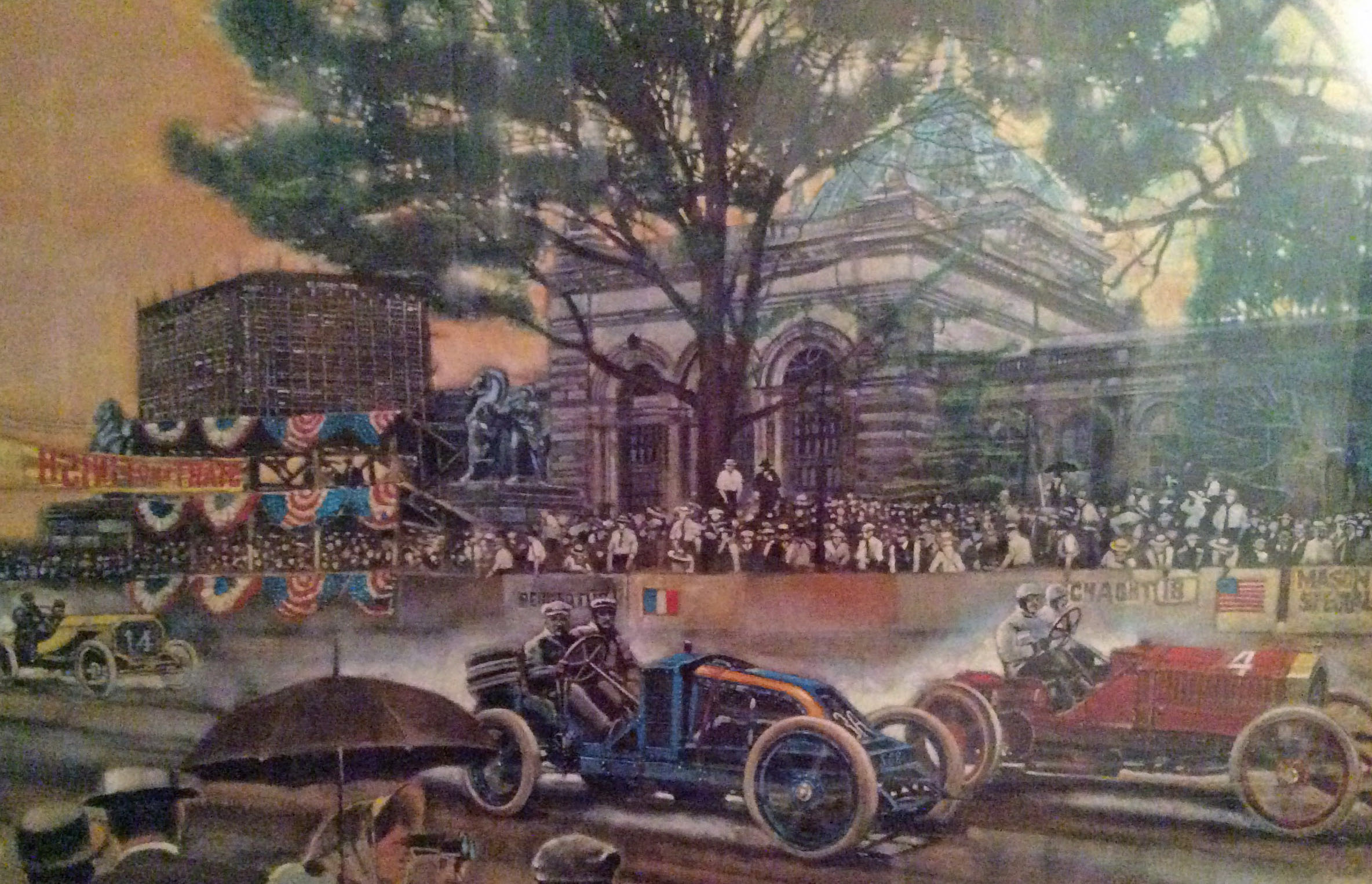
Update: Tobey Ross: I enjoyed the article in this week’s blog on the Vanderbilt Renaults. I was at Pebble this year and saw the awesome display. I also talked to Rob Kauffman about these amazing cars at the Art In Motion event at the Monticello Motor Club Event two weeks ago. I thought you might be interested to be reminded of the nice painting we commissioned for the Philadelphia Vintage Grand Prix in the early 1990s. It was done by Charles P. Vlasics and each of the PVGPA Board Members got a framed numbered print. This was organized by our PVGPA art director Bob Paglione so he might recall more about the study and he may know where the original art is. Fred Simeone was very supportive of the PVGPA and the blue car could be the Gibson’s, so it’s a great coincidence today. I have copied Fred to share this with him. I was Secretary of the Board so I have all the archives that we kept and can probably dig up a little more about the painting if you are interested. Thanks very much.
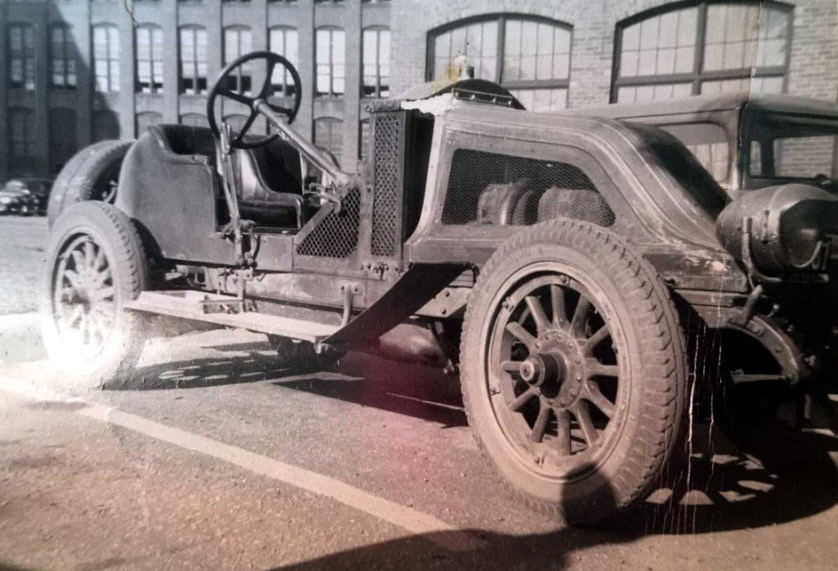
Courtesy of the Simeone Museum.
2017 Pebble Beach Concours d'Elegance.
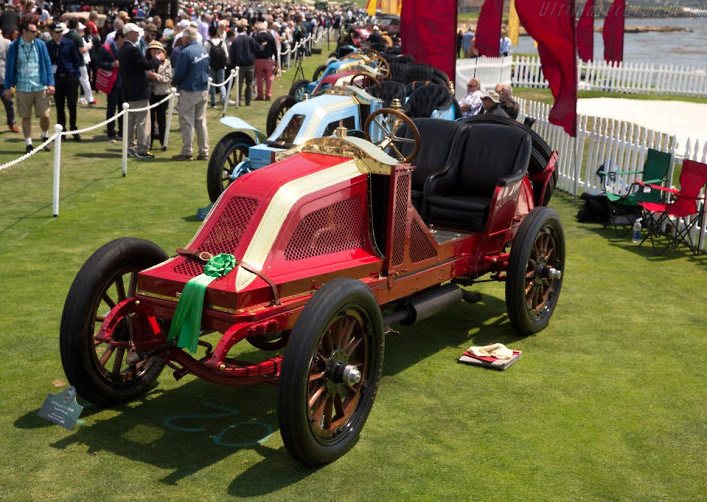
Images courtesy of Marvin McFalls.
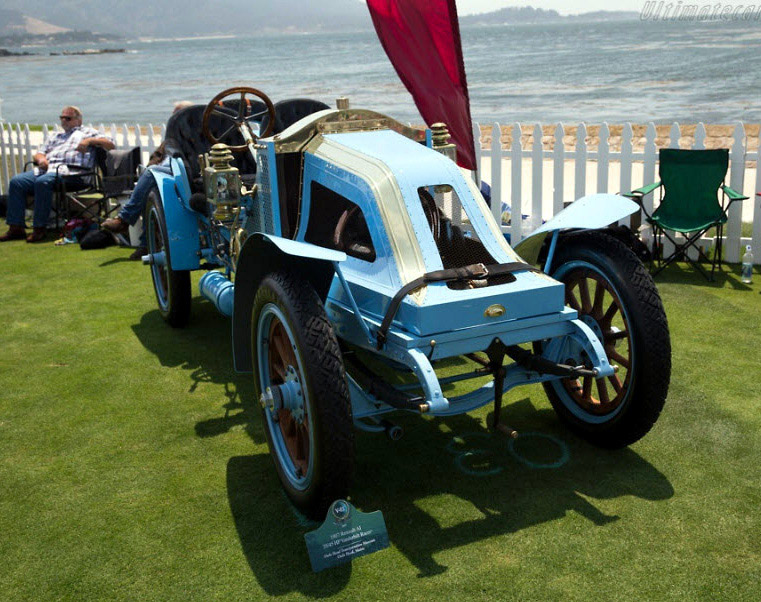
Owls Head Renault
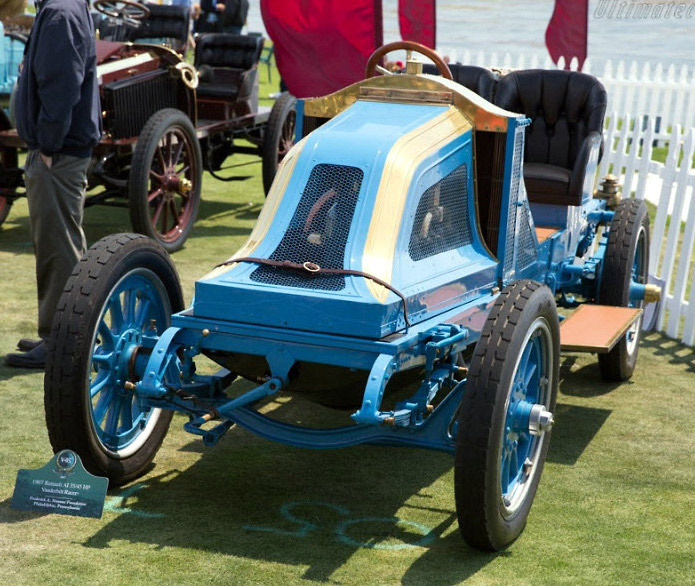
Simeone Renault
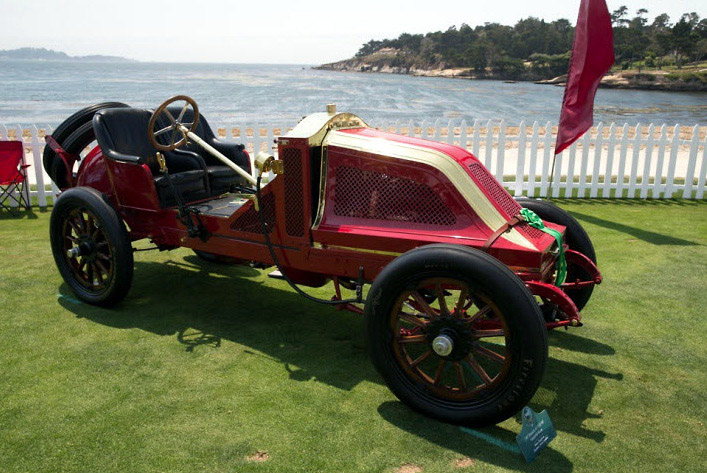
Kaufman Renault







Comments
Wonderful story about these cars. I was lucky to see Mr Gibson’s car at his home a few years ago. Minor correction, Renault didn’t win the 1903 Paris Madrid race, as it was cancelled after the first of three legs had been completed. Gabriel on a Mors was in first place at the time the race was stopped. Marcel Renault crashed and died. Louis Renault was in the lead pack, not sure where he was classified.
The article notes that (in reference to the first Vanderbilt Cup Race) “the event was held in the family’s land on long island” that seems to be an assumption on the part of the author. Hope his statement doesn’t become fact for readers who do not know the story of the Vanderbilt Cup races , which of course they have been reading here for many years. Not trying to nit pick, but misinformation and myth often become fact if left unattended.
Hugh Nutting:
The 32 Ford has 106” wheelbase. 1933 on into the 1940s are 112”. Hugh
This is a history lesson I’ve been looking forward to reading for many years. The James Melton/Robert Kauffman Renault lived here in Ridgefield Ct. until Melton found it in 1943. I have two photos of the car here in town back in the 1920’s with the odd plank fenders, and large headlights. I’ve always wondered who had it before James Melton bought it. Bob
______________________________________________________
Howard Kroplick
Bob, if you wish to share the photos, please send Jpegs to .(JavaScript must be enabled to view this email address). Thanks!
Hello, Please, does anyone know the color of the Renault that Raffalovich was driving at Brighton Beach 1909 24 hr race. Blue or red.
Thanks!